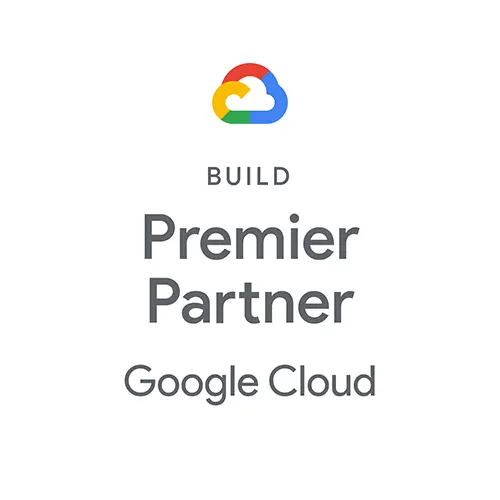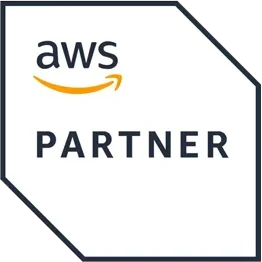
The world is moving to the cloud and software licensing is no different.
With cloud-based licensing, gone are the days when companies had to purchase physical licenses for the products they wished to use (a headache for both the software vendor and the customer). These licenses came in the form of a disk or sometimes a download. It was a one-time purchase that was often expensive and lacking customization options. While this method is still used in certain companies and circumstances, the cloud is becoming increasingly popular, due to its ability to adapt to the changing market and needs of vendors and customers.
What is cloud-based licensing?
Cloud software licensing refers to the process of managing and storing software licenses in the cloud.
The benefits of cloud software licensing models are vast. The main and most attractive benefit has to do with the ease of use for software vendors and the ability to provide customizable cloud software license management based on customer needs and desires. Cloud-based licensing gives software developers and vendors the opportunity to deliver software easily and quickly and gives customers full control over their licenses, their analytics, and more. This leads to greater revenue and customer satisfaction.
Why are cloud computing licensing models so attractive today?
Cloud based licensing gives software sellers the ability to add subscription models to their roster of services.
Subscription models are one of the most popular forms of licensing today. Think of Spotify, Netflix, Adobe, etc. Users sign up for a subscription (often based on various options and levels of use, features, etc.) and receive their licenses instantly. Users don’t even think of these as true licenses nowadays (because no one can even imagine or remember what it was like to receive a disk to install an app on the computer!).
This is all part of the main cloud computing trends that are shaping the world, especially after COVID-19. Cloud licensing solutions are a critical part of companies adapting to the technological age and staying relevant and competitive in the increasingly busy tech and cloud landscapes.

Cloud Migration Market
With the boom in the cloud, the cloud migration market size has grown drastically. In 2020, the cloud market was valued at 119.13 billion USD and is predicted to increase to 448.34 billion USD by 2026!
The answer is clear: cloud in general and cloud-based licensing specifically are tools that technology companies must embrace in order to keep up with market trends.
How difficult is it to move to the cloud?
The thought of transitioning to the cloud can be an overwhelming one for many companies. They must invest in cloud migration training for employees, research the right cloud solutions for the specific company and map out cloud cost management best practices as well as future technology trends in cloud computing. All of these factors come together in choosing how and when to migrate to the cloud.
One of the biggest concerns when it comes to the cloud transition is the cost. This is a natural concern as if companies are not careful, costs can quickly add up. Cloud cost management best practices must be adopted in order to optimize cloud costs.
Cloud cost management best practices include:
1. Choosing the right type of storage – There are a wide range of storage options on the cloud and choosing one which is above your needs will lead to unnecessary costs.
2. Eliminate unattached or unused resources – Unused resources are another waste of space and lead to higher cloud costs. If an employee turns on a temporary server and doesn’t turn it off when finished or forgets to remove storage from irrelevant instances, you’ll be paying for more cloud space than you need.
3. Right Size – The process of making sure your computer services are functioning at the most efficient and productive size.
The good news for enterprises looking to make the switch is that it isn’t an all-or-nothing move. Many companies choose to transition slowly, adding cloud software licensing to their repertoire of options while keeping more traditional licensing solutions on hand in order to ease the switch.
Future technology trends in cloud computing

With cloud adoption becoming the new norm, companies are looking towards future technology trends in cloud computing to guide their strategies and cloud adoption plans. What can we expect from the cloud moving forward?
1. The integration of hybrid/multi-clouds – Companies are looking at hybrid and multi-cloud models today more than ever before, in many cases as a way to avoid “putting all their eggs in one basket”. This model gives companies the flexibility to work with different clouds (public and private) based on specific needs while adding additional security features.
2. AI – AI is quickly becoming one of the top technology trends in cloud computing. Artificial intelligence gives companies the ability to become more efficient and adjust workflows with automation and intelligent practices.
3. IoT – The Internet of Things allows standard devices to connect to the cloud to use cloud-based applications and services. IoT gives companies the opportunity to receive real-time alerts from devices, boosting efficiency and problem solving when necessary. In addition, IoT collects data remotely and integrates smart-device management.
Cloud software licensing management
The beauty of cloud-based licensing is the ease at which it can be managed. All of the information software vendors need is available at the click of a button and data and licenses are stored safely and reliably.
Cloud-based licensing allows software vendors to give customers access to real-time data to increase profits and lower costs. The cloud allows access to migration data, information on license use (including those that aren’t being used and therefore being wasted), centralized records, etc.
Customers are able to make smart decisions for their companies based on this cloud data, thereby increasing profits and improving operational efficiency.
Cloud software licensing issues
The main issue companies face when shifting to the cloud is how exactly to offer their licensing scheme. Overall, this is a positive issue to have, as the cloud gives seemingly infinite possibilities for licensing options. However, it is critical that companies identify the correct model for themselves and use a software licensing vendor that understands the tech world themselves.
Cost can also be a cloud software licensing issue. Initial costs for moving to the cloud can be high and companies may be hesitant to shift to the cloud, wondering if the investment will be worthwhile in the long run. While cost is a legitimate and important factor in moving to cloud-based licensing, the long-term benefits and ability to bring down costs with cloud are tremendous. By having more control over the licensing process, software vendors are able to save themselves as well as their customers
Cloud based licensing strategy
In order to successfully move software licensing to the cloud, it’s important to have a strategy and to integrate cloud cost management best practices.
The first step of creating a strategy for a cloud licensing solution is to review the current state of licenses in a company. What exists, what is lacking, and what can be improved? Where are the weak spots in the software licensing process?
From there, costs can be taken into account. When transitioning to the cloud, costs can start adding up quickly. This can be especially true when multi-cloud environments come into play. Due to the unlimited options available from the cloud, many companies will find themselves adding on cloud options that they may not even need in practice.
This is why using one centralized platform is critical when moving to cloud licensing solutions. It allows costs to remain under control and a central platform to keep track of costs, expenses, licensing use, and more.
Thales Licensing Solutions
Here at Thales, our ultimate goal is for software developers and vendors to be able to license their software at ease, effectively, and efficiently. Our wide range of software licensing models gives our clients the ability to provide flexible solutions depending on customer want and needs.
This method allows customers to launch multiple business models, improve customer experience, and most importantly, adapt to the constantly changing and evolving market.

Software Packaging and Pricing Strategies for the Cloud - White Paper
Lucrative Pricing and Packaging Strategies for the Cloud Today, Tomorrow, and Beyond Software pricing and packaging is an art form regardless of whether it’s delivered as a service or as physical on premise software. There is also a lot of science involved. This paper...



